While the Dutch have always been known for their tolerance towards other religions, the first synagogue was not opened in Amsterdam until 1612. Yet, by 1657 both Sephardic and Ashkenazic Jews were recognized as full-fledged citizens. In fact, the Dutch authorities order that they behave as Orthodox Jews, which in turn grants sizeable power to Jewish leaders of the community. By the middle of the 17th century, 20 percent of Amsterdam’s Stock Market traders were Jewish. Dutch Jews’ linguistic and business skills gave them the chance to work in both banking and commerce, including the silk industry, sugar refining, and diamond-cutting. In addition, Holland was the first country in Europe to accept Jews in its Parliament and to give them governmental posts.
With the Nazi Occupation of Holland, Jews paid a very heavy price: out of 140,000 Jews residing in Holland, 104,000 were killed. After the war, the community slowly rebuilt itself to 30,000 citizens on a total population of over 15 million. Today there are 30 synagogues in a country that once counted over a hundred.
Jewish Amsterdam
European Jewish Heritage Tours’ visit of Amsterdam starts with a half-day visit of the Historic Jewish Museum, located in a complex of four different synagogues that have been brought together in a structure of glass and metal. The tour enables visitors to understand both the fundamentals of Zionism and Judaism, and the daily life of Sephardic and Ashkenazic Jews in previous centuries. The museum’s highlight is the Great Synagogue, inaugurated in 1671, after the community gave up on the false Messiah of Sabbatai Zevi.
You will then explore the ancient Jewish quarter, which from the 18th century until the Second World War, was the hub of Jewish life in Amsterdam. One of the high points of this walk is a visit to the Rembrandt Museum, the home and studio where the Dutch artist lived and worked from 1639 to 1658. The influence of his Jewish environment courses through his etchings and paintings and this tour shows why the world’s greatest portrait painter was so taken with the local Jewish population.
Other Jewish-themed masterpieces can be seen at the Rijks museum, including the Jewish Bride and the Lamentations of Jeremiah, and a visit of this outstanding institution can be included on the tour. We also highly recommend that you make time to visit the magnificent Van Gogh Museum, one which holds the greatest collection of his paintings and etchings.
One of the most moving visits that you can take with European Jewish Heritage Tours is to the Portuguese Synagogue (inspired by the Temple in Jerusalem), the largest synagogue in the world when inaugurated in 1675. At the same time, no visit of Amsterdam is complete with a tour of the deeply moving and informative Anne Frank Museum, whose eloquent story speaks for itself. (Tickets for the latter must be booked well in advance because they are among the most sought-after in all of Europe).
For those visitors who to understand the compromises that were faced daily by Dutch citizens under the Nazis, European Jewish Heritage Tours can also organize a visit to the Verzetsmuseum, which documents the choices and dilemmas that were confronted during the Nazi Occupation. Not only are their poignant displays of objects, but also eyewitness accounts of those Dutch who had the courage to save Jews and those who did not.
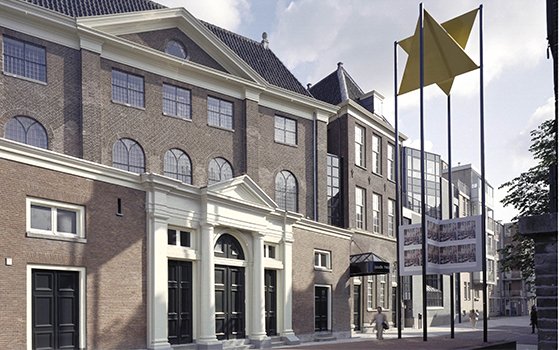

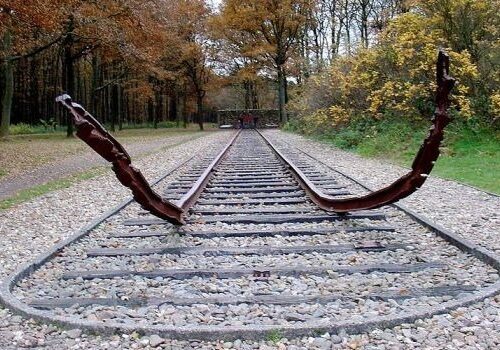
A Dutch Concentration Camp Museum
Herzogenbusch was a Nazi concentration camp located in Vught near the city of Hertogenbusch. Along with Natzweiler-Struthof in occupied France, it was the only concentration camp run directly by the SS in Western Europe outside of Germany. The camp was first used in 1943 and held 31,000 prisoners. About 750 prisoners died in the camp, and the others were transferred to other camps shortly before the camp was liberated by the Allied Forces in 1944. After the war the camp was used as a prison for Germans and Dutch collaborators. With our local expert guide and a private chauffeur, you can take a 90-minute ride to the camp—now a museum–and discover the exhibitions and the national monument commermorating the camp and its victims.
Groningen Synagogue
The large twin-towered synagogue in Groningen was inaugurated in 1906, replacing an earlier synagogue that had been built in 1756. In 1952, the building was sold and became a dry-cleaning plant. Later it became a church and assembly hall of the Apostolic Fellowship. A Foundation established in 1973 oversaw the restoration of the building, which has functioned as a synagogue again since 1981, as well as a venue for events. It is open to the public for visits and guided tours. Two long-forgotten 19th century mikvehs were discovered in the Jewish community building in early 2014. Today, European Jewish Heritage Tours can arrange visits to the synagogue upon special request.
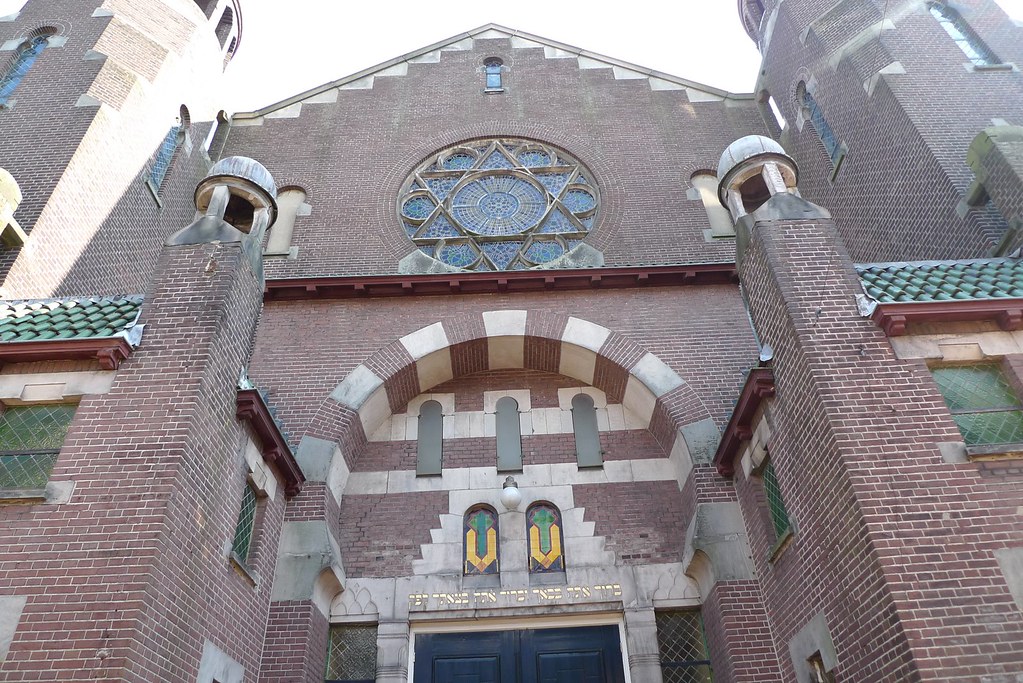
Dike Synogogue
Dating from 1845, the synagogue, a small, cottage-like building with a peaked roof and arched windows, was built on a dike. Regular services were held until 1920. Seriously damaged during World War II, it was used after the war as the premises of a sack manufacturer, a greengrocer and a carpenter. A foundation was established in 1994 to prevent its demolition as part of a dike reinforcement project. The Foundation bought the building in 1997, dismantled it into 11 components and re-assembled it at a new site 80 meters away from the original position, with interior furnishings from a former synagogue at Zaltbommel. It was inaugurated in 2003 and now serves the small local Jewish community as well as for exhibitions and weddings. It is open to the public every second weekend of the month.
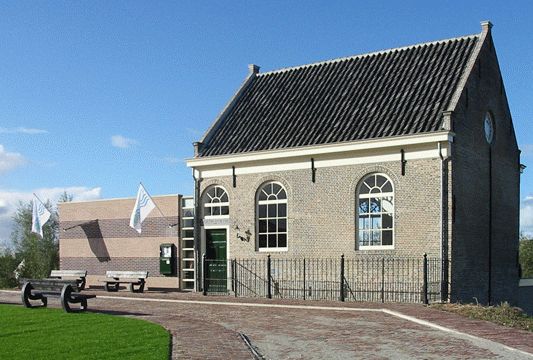
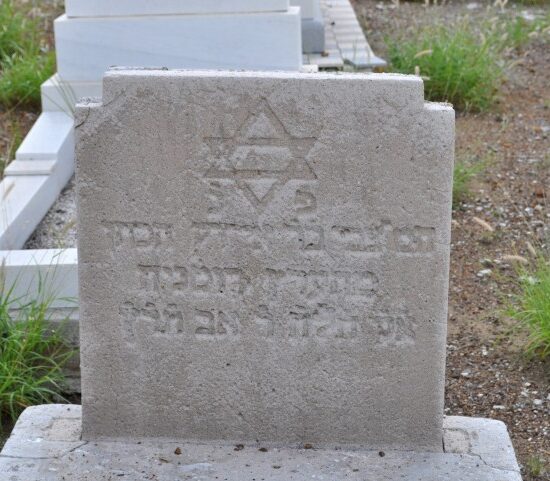
The Beit Haim Jewish Cemetary
The historic Portuguese-Jewish cemetery in the village of Ouderkerk, about eight kilometers from Amsterdam, dates from 1614 and is one of the oldest Sephardic cemeteries in Europe. Occupying four hectares, it includes more than 27,500 graves in the Sephardic style. Among those buried here are the parents of the philosopher Baruch Spinoza. Already a century ago, David Henriques de Castro catalogued the oldest burial plot, together with the inscriptions on the stones. (European Jewish Heritage Tours can arrange visits to the cemetery in conjunction with another historic visit.)

